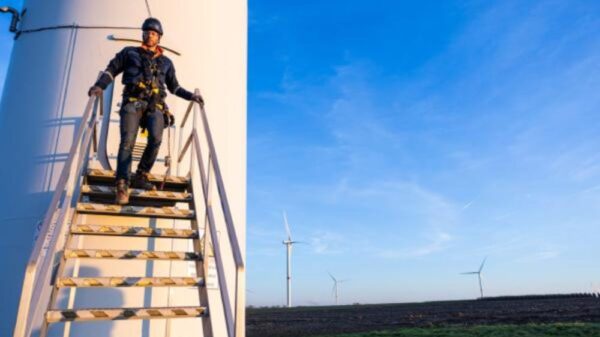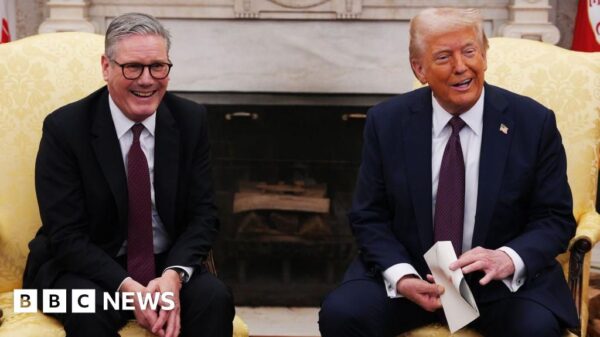The Commission has adopted its proposal for the 2024 fishing opportunities for the Baltic Sea in response to a scientific assessment that indicates several fisheries are in a dire situation.
The Commission proposed the total allowable catches (TACs) and quotas for three out of the ten stocks managed in the Baltic Sea. The remaining quota proposals will be established at a later stage. The Commission proposes to increase fishing opportunities for salmon in the Gulf of Finland by 7%, while proposing to decrease fishing of salmon in the main basin by 15%, and to decrease herring catches in the Gulf of Riga by 20%.
As for the other stocks in the Baltic (western cod, eastern cod, western herring, Bothnian herring, central herring, sprat and plaice), the Commission has requestedadditional information from the International Council on the Exploration of the Seas (ICES) to take better account of the fact that cod is caught together with flatfish, and herring together with sprat.
Scientists estimate that the size of the central Baltic herring stock has been around or below minimum levels since the early 1990s. The stock size of Bothnian herring fell below healthy levels due to the lower number of young fish and the smaller size of older fish. The Commission therefore proposes to close the targeted fisheries for both stocks, and to maintain the closure for the targeted fisheries on cod stocks, western herring and salmon in most of the main basin.
https://googleads.g.doubleclick.net/pagead/ads?client=ca-pub-1888590479122063&output=html&h=18&adk=3264976003&adf=3277914015&w=705&lmt=1693464979&rafmt=12&format=705×18&url=https%3A%2F%2Fwww.eureporter.co%2F%3Fp%3D165285%26preview_id%3D165285%26preview_nonce%3D63dfc106ef%26preview%3Dtrue%26_thumbnail_id%3D105454&host=ca-host-pub-2644536267352236&wgl=1&dt=1693464979320&bpp=4&bdt=3683&idt=554&shv=r20230829&mjsv=m202308280101&ptt=9&saldr=aa&abxe=1&cookie=ID%3D38ea3e93f80a65a7-2248654198d6008c%3AT%3D1667839953%3ART%3D1693388231%3AS%3DALNI_MYQCNn0hoEcOVUbODITnQF7XCizqg&gpic=UID%3D00000b1161a1c760%3AT%3D1665742902%3ART%3D1693388231%3AS%3DALNI_MY_q3pgRlzNKS7kDvBj_-KaOtSDUw&prev_fmts=0x0&nras=1&correlator=4365707670451&frm=20&pv=1&ga_vid=1046813545.1634124352&ga_sid=1693464980&ga_hid=982687051&ga_fc=1&u_tz=60&u_his=2&u_h=768&u_w=1366&u_ah=728&u_aw=1366&u_cd=24&u_sd=1&adx=20&ady=1841&biw=1126&bih=560&scr_x=0&scr_y=604&eid=44759926%2C44759875%2C44759837%2C31076838%2C44795921%2C44798323&oid=2&pvsid=293646916695101&tmod=1928096313&nvt=1&ref=https%3A%2F%2Fwww.eureporter.co%2Fwp-admin%2Fpost.php%3Fpost%3D165285%26action%3Dedit&fc=1920&brdim=211%2C0%2C211%2C0%2C1366%2C0%2C1155%2C651%2C1143%2C560&vis=1&rsz=%7C%7CoEebr%7C&abl=CS&pfx=0&fu=256&bc=31&ifi=2&uci=a!2&btvi=1&fsb=1&xpc=wHRcPRDBMr&p=https%3A//www.eureporter.co&dtd=564
The Commission will propose setting by-catch TACs for western cod, eastern cod, western herring, Bothnian herring and central herring on the basis of additional information expected in autumn. This proposal will allow vessels to land the unavoidable catches of each of these weak stocks when fishing for example for plaice or sprat.
The proposed TACs are based on the best available scientific advice from ICES and follow the Baltic multiannual management plan adopted in 2016 by the European Parliament and the Council. A detailed table is available below.
Cod
https://googleads.g.doubleclick.net/pagead/ads?client=ca-pub-1888590479122063&output=html&h=280&slotname=9176056444&adk=769082853&adf=677613361&pi=t.ma~as.9176056444&w=705&fwrn=4&fwrnh=100&lmt=1693464979&rafmt=1&format=705×280&url=https%3A%2F%2Fwww.eureporter.co%2F%3Fp%3D165285%26preview_id%3D165285%26preview_nonce%3D63dfc106ef%26preview%3Dtrue%26_thumbnail_id%3D105454&host=ca-host-pub-2644536267352236&fwr=0&fwrattr=true&rpe=1&resp_fmts=3&wgl=1&dt=1693464979324&bpp=2&bdt=3687&idt=619&shv=r20230829&mjsv=m202308280101&ptt=9&saldr=aa&abxe=1&cookie=ID%3D38ea3e93f80a65a7-2248654198d6008c%3AT%3D1667839953%3ART%3D1693388231%3AS%3DALNI_MYQCNn0hoEcOVUbODITnQF7XCizqg&gpic=UID%3D00000b1161a1c760%3AT%3D1665742902%3ART%3D1693388231%3AS%3DALNI_MY_q3pgRlzNKS7kDvBj_-KaOtSDUw&prev_fmts=0x0%2C705x18&nras=1&correlator=4365707670451&frm=20&pv=1&ga_vid=1046813545.1634124352&ga_sid=1693464980&ga_hid=982687051&ga_fc=1&u_tz=60&u_his=2&u_h=768&u_w=1366&u_ah=728&u_aw=1366&u_cd=24&u_sd=1&adx=20&ady=2167&biw=1126&bih=560&scr_x=0&scr_y=604&eid=44759926%2C44759875%2C44759837%2C31076838%2C44795921%2C44798323&oid=2&pvsid=293646916695101&tmod=1928096313&nvt=1&ref=https%3A%2F%2Fwww.eureporter.co%2Fwp-admin%2Fpost.php%3Fpost%3D165285%26action%3Dedit&fc=1920&brdim=211%2C0%2C211%2C0%2C1366%2C0%2C1155%2C651%2C1143%2C560&vis=1&rsz=%7C%7CoEebr%7C&abl=CS&pfx=0&fu=128&bc=31&ifi=3&uci=a!3&btvi=2&fsb=1&xpc=e5JxWYTh3t&p=https%3A//www.eureporter.co&dtd=624
For eastern Baltic cod, the Commission intends to keep a catch limit for unavoidable by-catches and all the accompanying measures decided in. Additionally, the Commission suggests removing the exemption from the spawning closure for certain herring fisheries. Despite the measures taken since 2019, when scientists first warned about the poor status of cod, the situation has not yet improved.
The condition of western Baltic cod is weak, and the biomass was at its lowest levels in 2022. This is probably due to a significant natural mortality, which scientists are not yet able to fully understand. The Commission therefore proposes to maintain the TAC limited to unavoidable by-catches and all the accompanying measures from 2023, but to remove recreational fisheries and the exemption from the spawning closure for certain herring fisheries.
Herring
The stock size of western Baltic herring remains below healthy levels. The Commission proposes to maintain the TAC limited to unavoidable by-catches and to remove the exemption for small-scale coastal fisheries.
For herring in the Gulf of Bothnia, the Commission also proposes to close the targeted fisheries and to set a TAC limited to unavoidable by-catches. The scientific assessment states that the likelihood of the stock size falling below the minimum level would be above 5% even if there were no catches.
The stock size of central Baltic herring fell below the minimum levels. The Commission therefore proposes to close the targeted fishery and to limit the TAC to unavoidable by-catches. Consequently, unlike before, the catches of central Baltic herring in the Gulf of Riga should no longer be included in the fishing opportunities for herring in the Gulf of Riga. The resulting scientific catch advice suggests a decrease of 23%, but the Commission proposes to limit the decrease to 20%, as the stock is healthy.
Plaice
While scientific advice would allow for a considerable increase, the Commission remains cautious, mainly to protect cod – which is an unavoidable by-catch when fishing for plaice. At the same time, new measures to reduce cod by-catches through alternative fishing gear will be implemented soon. The Commission therefore requested additional information from ICES before proposing a TAC.
Sprat
Scientific advice for sprat recommends a small decrease in catches. However, sprat is caught together with herring – especially central herring – whose biomass is below minimum levels. Therefore, the level of catches needs to take this factor into consideration. The Commission also requested additional information from ICES before proposing a TAC.
Salmon
The status of the different river salmon populations in the main basin varies considerably, with some remaining weak and others healthy. To achieve healthy levels, ICES advised two years ago the closure of all salmon fisheries in the main basin. At the same time, ICES assessed it would be possible to maintain certain fisheries during the summer in the coastal waters of the Gulf of Bothnia and the Åland Sea. ICES maintained the principle of its advice but limited the geographical area to the Bothnian Bay and decreased the related catch level. The Commission therefore proposes adjusting the fishing opportunities and the accompanying rules accordingly.
Next steps
Based on these proposals, EU countries will take a final decision to determine the maximum quantities of the most important commercial fish species that can be caught in the Baltic Sea basin. The Council will examine the Commission’s proposal in view of adopting it during a Ministerial meeting on 23-24 October.
Background
The fishing opportunities proposal is part of the European Union’s approach to adjust the levels of fishing to long-term sustainability targets, called maximum sustainable yield (MSY), as agreed by the Council and the European Parliament in the Common Fisheries Policy. The Commission’s proposal is also in line with the policy intentions expressed in the Commission’s Communication “Sustainable fishing in the EU: state of play and orientations for 2024“ and with the Multiannual Plan for the management of cod, herring and sprat in the Baltic Sea.
The current situation is difficult for fishermen and women as formerly important commercial stocks (western and eastern cod; western, central and Bothnian herring; and salmon in the southern Baltic Sea and rivers) are also under additional pressures, notably from habitat loss due to a degradation of the environment both in inland waters as well as in the Baltic Sea itself. To help fishermen and women in the Baltic Sea, Member States and coastal regions can use the European Social Fund Plus to implement measures for lifelong learning and skills development.
The Baltic Sea is the most polluted sea in Europe. It is affected by biodiversity loss, climate change, eutrophication, overfishing, and elevated levels of contaminants such as pharmaceuticals and litter. Concerned about this situation, the European Commission is organising the secondedition of the Our Baltic Conference in Palanga, Lithuania, on 29 September 2023. This high-level event will bring together Ministers from the eight EU countries surrounding the Baltic Sea (Denmark, Germany, Estonia, Latvia, Lithuania, Poland, Finland and Sweden).
For more information
Proposal fishing opportunities Baltic Sea 2024
Questions & Answers on Fishing Opportunities in the Baltic Sea in 2024
Table: Overview of TAC changes 2023-2024 (figures in tones except for salmon, which is in number of pieces)
| 2023 | 2024 | |
| Stock and ICES fishing zone; subdivision | Council agreement (in tonnes & % change from 2022 TAC) | Commission proposal (in tonnes & % change from 2023 TAC) |
| Western Cod 22-24 | 489 (0%) | pm (pro memoria). TAC will be proposed at a later stage. |
| Eastern Cod 25-32 | 595 (0%) | pm |
| Western Herring 22-24 | 788 (0%) | pm |
| Bothnian Herring 30-31 | 80 074(-28%) | pm |
| Riga Herring 28.1 | 45 643 (-4%) | 36 514 (-20%) |
| Central Herring 25-27, 28.2, 29, 32 | 61 051 (-14%) | pm |
| Sprat 22-32 | 201 554 (-20%) | pm |
| Plaice 22-32 | 11 313 (+25%) | pm |
| Main Basin Salmon 22-31 | 63 811 (0%) | 53 967 (-15%) |
| Gulf of Finland Salmon 32 | 9 455 (0%) | 10 144 (+7%) |
Share this article:

































